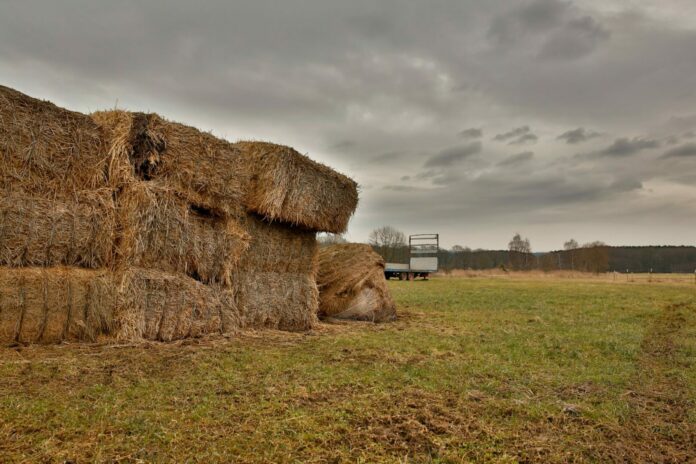Hay farming is one of the most profitable ventures in Kenya. The country is currently experiencing the worst drought in 40 years, and Livestock farmers are bearing the brunt. Livestock deaths are on the rise due to hunger, given that many farmers rely on natural feeds.
To prevent further deaths of their livestock, most farmers are going for hay as a feed alternative, meaning those practicing hay farming are making a kill. Hay is a plant that has been cut, dried, and stored for animal feed.
Hay farming is common to farmers in hot and dry regions. Many crops can be used to make hay. In Kenya, hay can be made from grass or leguminous crops.
The most commonly used grass for hay farming in Kenya is Boma Rhodes grass, as it matures quickly and requires less water, while the most used legume for haymaking is Alfalfa, also known as Lucerne.
Other crops that can be used in haymaking are Napier grass, Timothy, Maize, Oats, Desmodium Bermuda grass, cowpeas, and clovers.
Read: Hidden dark sides of dairy farming that nobody will tell you
Hay Farming Process
The process of growing hay involves growing the plant to maturity, cutting, drying, raking, and forming bales. Haymaking is best done after the rainy seasons. The idea is to grow forage when the rains prevail, then make the hay once the rains cease.
However, sometimes rains extend or fail, highlighting the need to study weather patterns to predict the rains. Alternatively, you can invest in an irrigation and drying system to avoid relying on the weather.
The stages of hay farming include:
Soil Preparation
Preparing the soil involves testing the soil’s pH, fertility, and weeding. The best pH for hay farming is 6.5 -7. If the pH is too low or too high, you can use lime to increase it and gypsum to lower it.
The land should be free from weeds as much as possible. Weeds will affect the growth of fodder crops such as Alfalfa, clover, or timothy.
Planting and growing
The seeds can be planted by use of hand or machines, depending on the size of the farm. Spread the seeds all over your farm, bury them, and water them immediately.
For sufficient growth, your land should be rich in moisture and nutrients. Water at least three times a day for the first ten days. After the ten days, you can slow down to water once per day. For pest control, use pesticides to prevent infestations.
Cutting hay
Hay cutting is done through the use of mowers. Hay is usually cut after around 60 days or when flowering begins because this is when the crop is considered to have high nutritional value.
The best day for harvesting is when the day is hot or dry.
Drying
The forage needs to be completely dry. When it completely dries, the crop should change from green to brown. Drying usually takes 2-3 days when the environment is hot and dry. Spread the forage widely to ensure even drying.
Bailing
It’s now time to turn your forage into bales. The size of the bales will depend on the baler you use. Most small square bales weigh 18 to 28 kg, while round bales weigh 363 to 681kgs.
Most farmers in Kenya prefer small-sized bales as they are easier to carry and ideal for small herds of livestock.
Transporting and Storing
The bales are moved from the field to a barn or other building for storage. The bales should be at a moisture content level of 15% – 20%. If the moisture levels are higher, allow the bales to sit in the field for more days to dry.
Read: How to use tube silage to grow dairy farming profits
How Profitable is Hay Farming in Kenya?
To make a lot of money in this business, you will need a lot of lands; the more land you put under the hay, the bigger the profits. An acre of land is estimated to produce 200 to 250 small square bales.
One square bale goes for between ksh150 to ksh250 on a regular season and up to ksh 350 when the demand is high. The production cost is estimated at ksh15000 to ksh20000 under normal conditions. Harvesting occurs twice a year.









